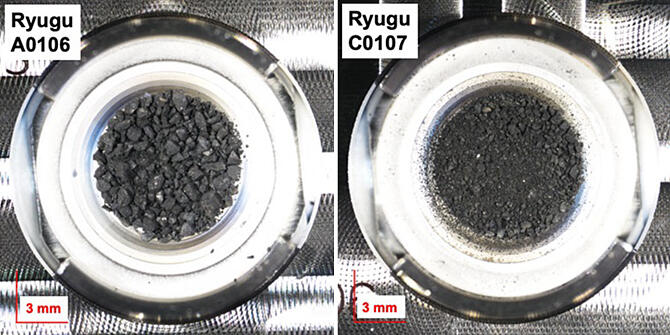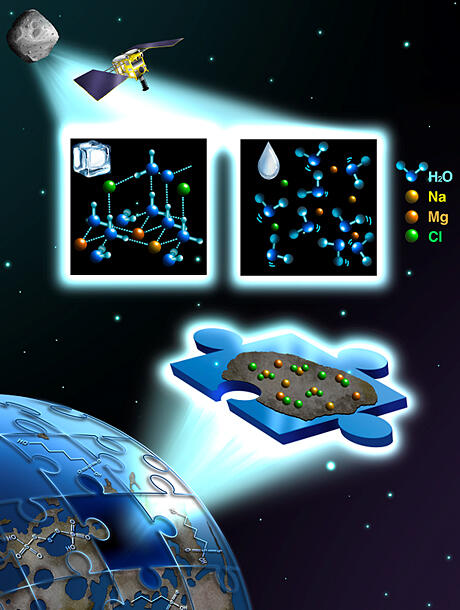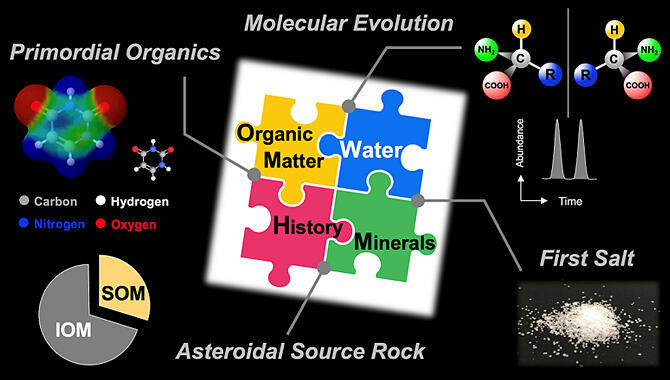Samples collected from the surface of the asteroid Ryugu were found to contain a very large amount of sodium ions (Na+), and a wide variety of organic sulfur molecules were newly identified. An international joint research group consisting of Researcher Toshihiro Yoshimura and Deputy Director, Principal Scientist Yoshinori Takano of the Biogeochemistry Research Center in the Research Institute for Marine Resources Utilization at the Japan Agency for Marine-Earth Science and Technology (JAMSTEC), Professor Hiroshi Naraoka of the Faculty of Science at Kyushu University, together with researchers of the School of Science at the University of Tokyo, the National Institute of Advanced Industrial Science and Technology (AIST), HORIBA Advanced Techno, HORIBA TECHNO SERVICE, Thermo Fisher Scientific Japan group, Hokkaido University, and Tokyo Institute of Technology (Tokyo Tech), revealed these findings. The results were published in the September 18, 2023 issue of the scientific journal Nature Communications.

Provided by JAMSTEC
The asteroid Ryugu is one of the primordial celestial bodies that retains the chemical composition of the entire solar system from before the Earth's genesis. An initial analysis by the 'Hayabusa2' research team revealed the diverse properties, contents, and history of this asteroid. However, information on the ionic components of its soluble materials remains unknown.

Provided by JAMSTEC
The international joint research group extracted soluble components from samples of Ryugu using hot water, organic solvents, weak acids (formic acid), and strong acids (hydrochloric acid) in a stepwise manner. The obtained components were then precisely analyzed for cations, anions, and ionic organic materials using ion chromatography and ultra-high-resolution mass spectrometry.
The results showed that the hot water extracts, which reflect the chemical composition of the most soluble components, were enriched in sodium ions (Na+). These ions are believed to act as electrolytes that stabilize the surface charge of minerals and organic materials, and some of them are believed to form sodium salts via ionic bonding with volatile low-molecular-weight organic and other materials.

Provided by JAMSTEC
Furthermore, the molecular sulfur species detected by the analyses were found to coexist with ionic species with a wide range of valences and precipitated inorganic salts. Reductive iron and nickel sulfides were originally present on Ryugu. These materials are believed to have chemically evolved into various sulfur-containing organic molecules with hydrophilic and amphiphilic properties through changes in their chemical states as they underwent water reactions. Additionally, a group of metastable hydrophilic sulfur molecules that transformed into insoluble sulfur allotropes was newly discovered, and traces of various chemical reactions were recorded.
These results not only reveal how primordial materials existed in the solar system before the Earth's genesis and how they evolved in the early solar system but also provide important insights into the chemical evolution of the materials that make up the Earth, the oceans, and life on Earth.
Journal Information
Publication: Nature Communications
Title: Chemical evolution of primordial salts and organic sulfur molecules in the asteroid 162173 Ryugu
DOI: 10.1038/s41467-023-40871-0
This article has been translated by JST with permission from The Science News Ltd. (https://sci-news.co.jp/). Unauthorized reproduction of the article and photographs is prohibited.




